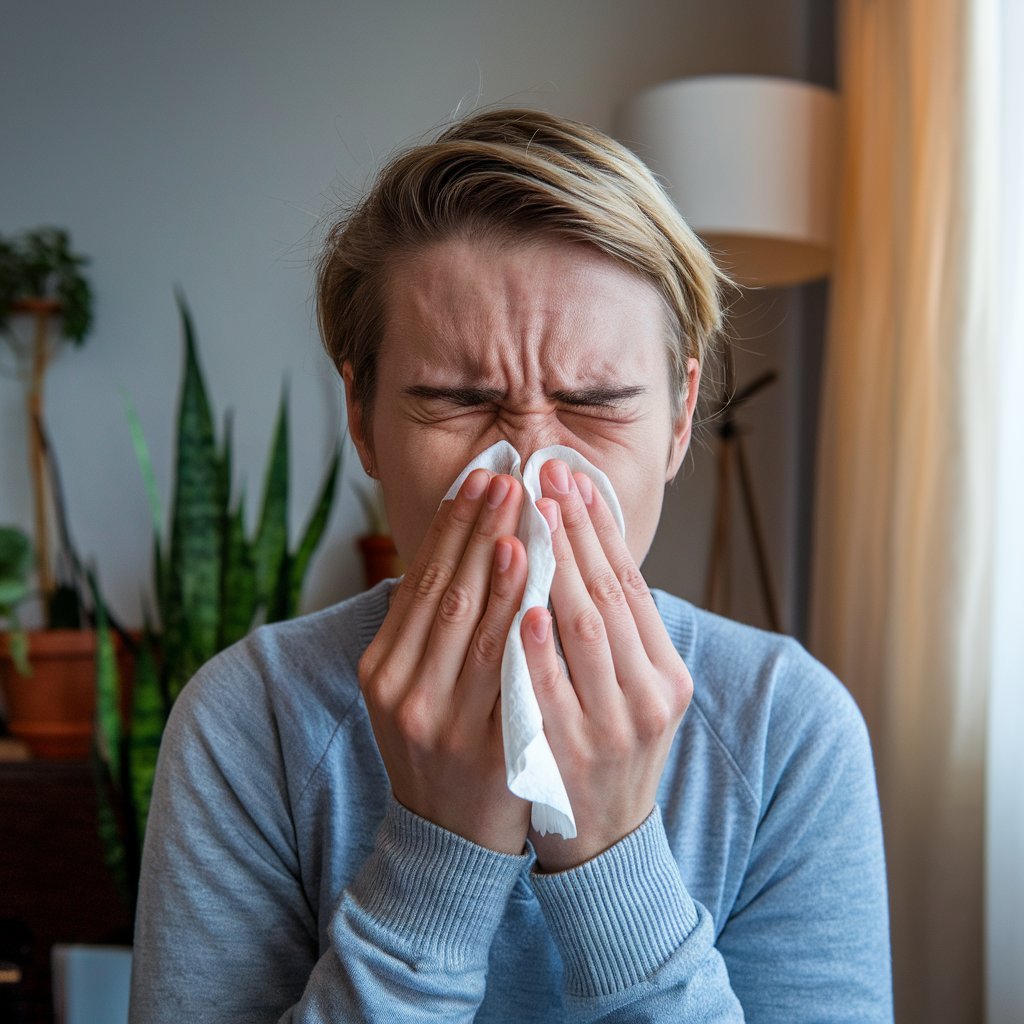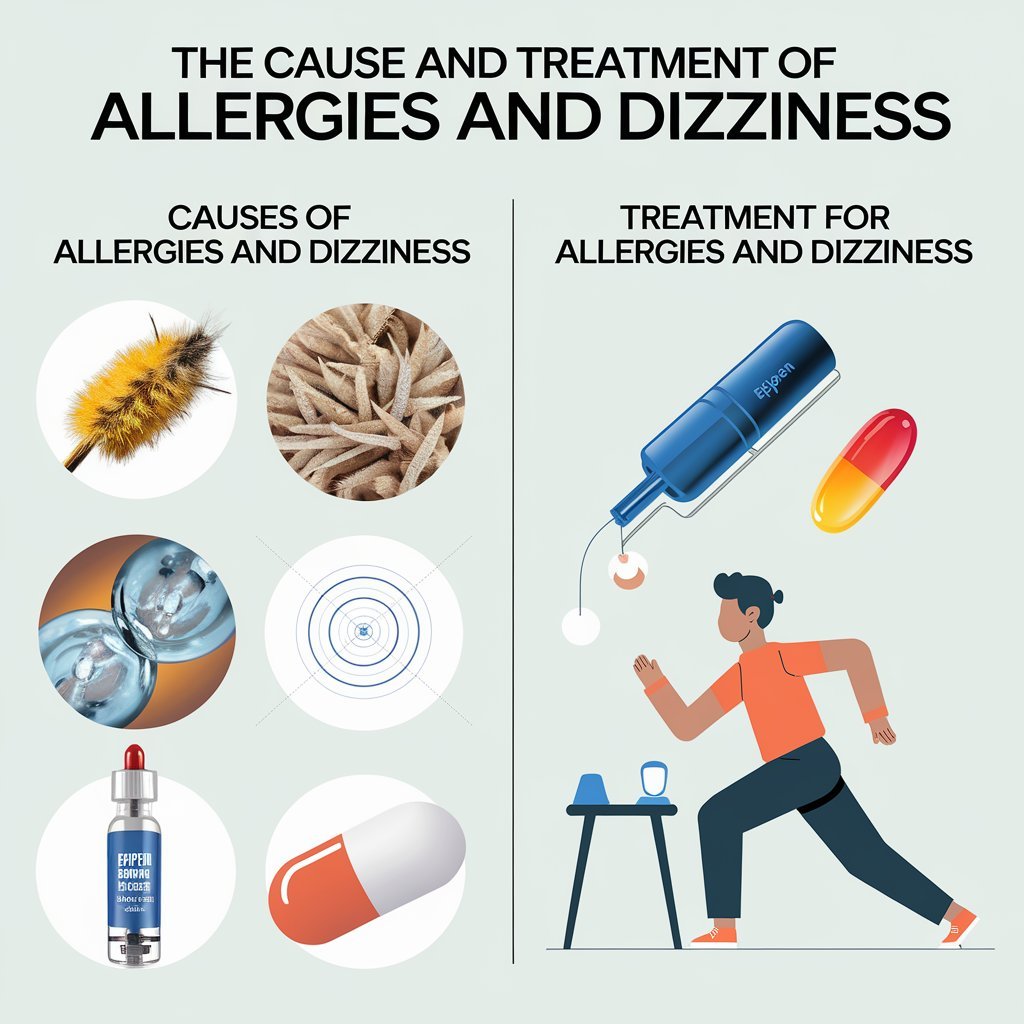” Allergies take many forms and can be caused by many risk factors. Symptoms develop when your body incorrectly identifies a harmless substance as being dangerous, leading it to mount an inappropriate immune response called an allergic reaction.
You can be allergic to things in the environment; that is, pollen, pet dander, mold, insect venom, and dust mites. You can be allergic to the things you consume, from certain foods to medications. Each allergy can cause different symptoms, including sneezing, watery eyes, skin rashes, and itching.
Immune System Reaction
Allergies result when a harmless substance to the body, known as an allergen, triggers your immune system to react. The immune system perceives these harmless substances as invading pathogens and sends special proteins of the immune system (antibodies) to destroy them, causing an allergic reaction to occur.

The terms “allergy” and “hypersensitivity” are often used interchangeably. Hypersensitivity describes the actual immune system reaction. In contrast, an allergic reaction usually refers to the signs and symptoms you develop. There are two main types of allergies: immunoglobulin E-mediated (IgE-mediated) and non-IgE-mediated.
IgE-Mediated Allergies
IgE-mediated allergies are also known as type 1 hypersensitivity. The first time you are exposed to an allergen you are sensitive to, your body makes a large amount of IgE antibodies. IgE antibodies trigger other immune cells called mast cells that release chemicals, causing allergic reactions.
The second time you are exposed to the same allergen, IgE antibodies specific to that allergen travel and attach to mast cells. The mast cells then release chemicals, including histamine, leukotrienes, and cytokines. These chemicals lead to symptoms like wheezing, trouble breathing, and hives.
Anaphylaxis is known as a severe, life-threatening reaction. Type 1 hypersensitivity anaphylaxis is referred to as anaphylactic shock. This severe reaction can cause the individual to experience trouble breathing, a rapid heart rate, and low blood pressure. Anaphylaxis requires immediate medical intervention.
Non-IgE-Mediated Allergies
A non-IgE response is mediated by your immune system but does not involve IgE antibodies. IgE-mediated responses are immediate or nearly always take place within two hours. In contrast, non-IgE-mediated responses are delayed. Such reactions may happen hours to days after exposure to an antigen. An antigen is a toxic or foreign substance that causes an immune response.
Anaphylaxis may also occur with this type, but this is much less common than the IgE-mediated response. It exhibits similar symptoms to anaphylaxis and, therefore requires immediate medical attention.
Common Allergens
The allergen involves the predisposition to an allergic reaction and the response of your immune system. Some of the common kinds of allergens are food, latex, insect venom or droppings, and environmental allergens (e.g., pollen and mold).
- Eggs
- Fish
- Milk and dairy
- Peanuts
- Sesame
- Shellfish, including crab, shrimp, and lobster
- Soy
- Tree nuts, including almonds, cashews, and walnuts
- Wheat
Most of the allergens in food are usually proteins. Food allergies can be IgE-mediated or non-IgE-mediated. IgE-mediated food allergies are more common and cause symptoms within two hours of eating the food. These symptoms can include nausea, abdominal pain, a rash, itching, and swelling in the lips, tongue, nose, throat, or skin.

- Non-IgE food allergies are rare and tend to affect infants and young children. This kind of food allergy has the GI type of symptoms. Some of its examples include:
- Food-protein-induced allergic proctocolitis (FPIAP): These allergic reactions are also often referred to as allergic proctocolitis and cause inflammation in the lower part of the intestine. Cow milk and soy are usually the source of this allergy, and it starts showing symptoms in infants before they turn
- Food-protein-induced enterocolitis syndrome (FPIES): This is more common in infants less than 9 months old. Symptoms are vomiting, diarrhea, and dehydration, which generally occur and then resolve within 24 hours.
- Food-protein-induced enteropathies: This allergy occurs in infants and children under 3 years of age. Symptoms are diarrhea, steatorrhea (oily stool), and faltering growth (babies gain weight slower). Cow milk, soy, and rice are the most common culprits.
Environment
Some environmental allergens that can cause allergies to some individuals include
- Cockroaches, especially a protein from the insect’s saliva, fecal matter, and body parts
- Dust mites- tiny bugs that inhabit dust, especially a protein in their fecal matter
- Dander from animal fur or feathers
- Pollen from grass, trees, and plants
- Some molds that occur frequently in wet and indoor environments; these include Alternaria, Aspergillus, Cladosporium, and Penicillium.
- These allergens move in the air. Common symptoms include sneezing, watery eyes, runny nose, and congestion.
Latex
Latex is another name for natural rubber latex, a soft substance derived from the sap of the Amazonian rubber tree (Hevea brasiliensis). It is possible to create any ordinary thing from latex: gloves, balloons, and toys, for example.
Latex can provoke an IgE-mediated allergy in sensitive people. Symptoms of an allergic reaction caused by latex can be the appearance of a skin rash, swelling, wheezing, and sneezing.
Insects
The main allergen of insect-related allergies is insect venom. Some people can experience allergic reactions from stings of insects like bees, wasps, and hornets. Symptoms of an insect sting allergy include swelling around the eyes and lips, hives, and difficulty breathing or wheezing. These allergies can range from mild to life-threatening anaphylaxis.

Mosquitoes, fleas, bedbugs, and other insects are responsible for the most common mild symptoms, such as itching, redness, and swelling of the affected skin. Anaphylaxis is rare. The type of allergy can be either IgE-mediated or non-IgE-mediated depending on the insect and person.
Medication
A person with a drug allergy has an exaggerated immune response to a drug. Drug allergies can be IgE-mediated or non-IgE-mediated:
- IgE-mediated: The first exposure to a drug may not trigger any symptoms but makes the immune system sensitive to it. In the second time you are exposed to the drug, you might experience immediate symptoms, which usually arise within a few minutes to an hour. Symptoms may include itchy rash, or in serious cases, it may be as severe as showing signs of anaphylaxis, such as wheezing, difficulty in breathing, and swelling in the mouth and throat.
- Non-IgE-mediated: Such allergies are more rare compared to IgE-mediated drug allergies. There are multiple types of non-IgE-mediated allergies. They may have other immune cells and antibodies rather than IgE. Some may stem from the sheer dosage or length of time exposure to the medicine, for instance, with some NSAIDs. Symptoms may also vary; sometimes, low cell counts in blood, inflammation within the blood vessel, and sometimes fever may arise.
Some drug allergies can be a combination of different immune responses. Consider allergies to penicillin, a type of antibiotic (a drug that treats bacterial and fungal infections). Penicillin allergies can be IgE-mediated, non-IgE-mediated, or both
Not all adverse drug reactions are allergies. Some may be side effects of the drug or health complications from an underlying health condition. For instance, some people taking chemotherapy drugs can experience an allergy, including anaphylactic shock. Others may experience non-allergic symptoms and side effects like hair loss and nausea.
Non-allergic responses are much more prevalent compared to allergic responses to drugs. Antibiotics are one of the most common drug allergens reported. Incidence on hospital admissions regarding allergies is reported, but only about 2% of these prove to be an actual allergy upon testing.
A health care provider will ask for information about medication allergies and the signs and symptoms of a reaction. This is relevant as they can determine whether it is an allergic or non-allergic response to the drug used.
Theories
Researchers understand that allergies result from a combination of an overactive immune response and exposure to an allergen. The hygiene hypothesis is related to why some people are more prone to develop allergies than others.
The hygiene hypothesis or hygiene theory states that children are sometimes overly protected from germs. They may not be exposed to the same variety of microbes that help teach the immune system to distinguish between harmful and harmless things.
This theory postulates that many parts of the world, their living conditions are too clean. People who live on farms or are exposed to farm animals and the environment have stronger immune systems since they have received that additional exposure. Much more research has to be done on this hypothesis.
Are Allergies Hereditary?
Allergies often have a family connection. That doesn’t mean you will have the same ones as your parents or siblings. Allergies can be hereditary, meaning they can be passed down from generation to generation.
The symptoms among the relatives who are allergic could be different, while you might develop an allergy without having allergies in your family. However, this is quite rare, especially among close families.
Who Is Susceptible to Allergies?
Everybody is susceptible to having allergies. But some individuals have risk factors for developing allergic conditions against very common allergens. Some of the factors are:
Certain jobs that may have latex gloves or other items, such as healthcare or lab research
Exposure to household allergens like dust mites or mold
Family history of allergy
Having a history of another allergy or an allergic condition, such as asthma, hay fever (allergic rhinitis), or eczema (a skin condition)
Remember, the identification of specific risk factors for an allergy is not a straightforward process. The human immune system is very complex, and there are several factors that can lead to an allergic reaction.
A Quick Review
Allergies are the result of an overactive immune system reacting to certain triggers, known as allergens. These allergens can include pollen, insect venom, dust mites, certain foods, some medications, and more. The specific causes of each allergy are not known, but allergies are generally due to a combination of an immune response and environmental risk factors.




